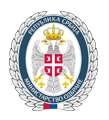- About MoD
Minister and Associates
- Minister
- State Secretary
- Assistant Ministers
- Secretary of the Ministry of Defence
Sectors
- Defence Policy Sector
- Human Resources Sector
- Material Resources Sector
- Budget and Finanance Sector
- Sector for Infrastructure and Hospitality Services
- SAF
- Documents
- Services
- Sport
- Archive
- Contacts
05.03.2010.
Interview of Brigadier General Ranko Zivak, SAF Air Force Commander to Politika daily
SERBIA CHOOSES FIGHTER PLANES
We have already made requests for additional information from the fourth and fifth generation of plane factories ranging from F-16 and F-18 to Gripen, Suhoy, MiG 29, Eurofighter and Rafale.
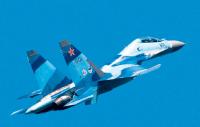
The commander of the Serbian air force Brig. Gen. Ranko Zivak (45) had long been a flight instructor and a test pilot. He flew all types of home air crafts. Even though his post today entails office work, he still readily enters the cockpit of a plane. ‘Unfortunately”, as he says, “due to a large number of obligations, I can dedicate little time to flying. Flying is my profession, and above everything my love and pleasure. Now there are younger pilots who have to get their number of flight hours. I fly whenever I find the time, on reconnaissance tasks, control and training tasks.
“How many air crafts does the air force have today as we could recently hear such comments that thee were more air crafts waiting for an overhaul than the number of functional planes?”
Currently we have some more than 110 air crafts. Approximately 70 % of air crafts and helicopter constitute this resource, the rest is undergoing renewal in cooperation with foreign partner and overhaul institutes as well as in “Moma Stanojlovic” home institute for overhauling. It is necessary that the readers make a distinction between planes and helicopters as resources, and those resources which are functionally available. The maximum approved expiry date has to meet two preconditions: the number of flight hours and the age of the air craft, for instance 30 years and 5000 hours of flight. If these conditions are met, then we have to dispose of this air craft and to do general overhaul in order to be able to extend the longevity of this air craft. Functionality is prone to changes on a daily basis.
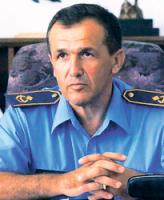 Which helicopters and planes, in the long-run, can be used in the future, with or without undergoing overhaul?
Which helicopters and planes, in the long-run, can be used in the future, with or without undergoing overhaul?Only training planes utva 75 in the long run cannot be used in the future, and they will be replaced by lasta 95 types. G-4 and gazelle helicopters have solid basis for modernization. Other air crafts which should be used in the period between 2018-2020 are MiG 29 planes, Mi-8 transport helicopters, and two transport planes An-26 until 2015. Orao and G-4 planes will be kept as their longevity has expired for some 70-80 % but as the precondition of flight hours has not yet been fully met, it is possible to extend their operational date after 2020. These planes were constructed here, on the home turf, and we possess all the construction documentation as well as overhaul capacities. Two Mi-17 helicopters are undergoing overhaul in cooperation with a foreign partner and by mid 2010 we should have them ready and fully functional. Mi-8 are also undergoing general repair, while fighter Mi 24 are still waiting for overhaul. The focus is on repairing transport helicopters, as transport is our top priority right now, that is, we use these air crafts on daily basis for SAF needs, and in civil support missions.
What kind of fate will MiG 21 planes meet after being for decades part of our air force?
MiG21 planes will become completely obsolete in the next two to three years which is why we are carefully and seriously considering the procurement of a new multi-purpose plane that should replace them. The MoD/SAF team will be tasked to analyze possible purchases this year. We have already lodged an information query with six or seven plane factories specializing in the fourth or fifth generation of planes ranging from F-16 and F-18 to Gripen, Suhoy, MiG 29, Eurofighter and Rafale. We will present the analysis early next year and the state will reach a decision on procurement, as this is a rather complex project requiring special contracting modules.
How many planes of this type does Serbia need, in view of this military analysis and estimate?
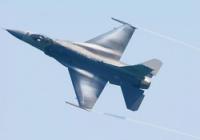 Serbia needs at least one squadron of multi-purpose fighters-12 to 14. however, our calculations and estimates suggest that given our future tasks, we would need some 20 to 24 planes.
Serbia needs at least one squadron of multi-purpose fighters-12 to 14. however, our calculations and estimates suggest that given our future tasks, we would need some 20 to 24 planes.What is the average number of flight hours of Serbian pilots?
The average number of flight hours per a Serbian pilot is the same as last year’s average number, 25 to 30 hours per pilot. Our mid-term goal is to increase this number up to 80 to 120 hours per pilot. Regulations and guidelines suggest that the highest level of capability as a pilot reaches eight years after graduation, and in this period in order to attain this level of capability he should have a rather high number of flight hours, in order to be able to maintain his skills at the top level, to give his best, both as a pilot and to make use of the performances of the plane.
Is there a document that defines the number of hours for acro pilots especially days before an air show?
According to the current methodological manual which we use for planning and which we strictly abide by, the number of hours per pilot is strictly defined. For example, in order to train and enable a pilot who flies orao or G-4 fighter at low or mid altitudes, a pilot has to perform 20 flight that is 7 hours 10 minutes. Of course, a trainee cannot be trained for acro flying in this period, but for people with already 1000 hours below their belt this is more than enough. Before each air show we cover the basics of this program, where a pilot must undergo flight training.
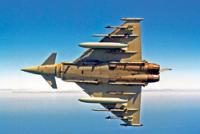 When and will the radar be installed on Mt. Kopaonik?
When and will the radar be installed on Mt. Kopaonik?This is one of the best positions when it comes to air space control. This position was made available to our Flight Control Agency and they installed a dome, while the only thing left to be done is setting up radar. This is now more an issue of political will, which has not yet been solved even though it would benefit all sides. Flight control is necessary as it enables safe aerial traffic in this region and the Belgrade regional flight control agency is tasked with this.
Type lasta 95 was presented to the public over a year ago. When will the first planes be delivered to the army?
Lasta 95 prototype is in the final testing stage and the contract between Utva air craft factory and Mod has already been signed. The General Military technical Council reached a decision for the first four planes to be delivered by the end of 2010, and the rest in the next two years.
Will the SAF air force take over the G-4 planes from Montenegro and orao planes from BiH?
These planes were the result of domestic production and knowledge, and we can provide relatively fast overhaul thus extending their life expectancy for another 10 to 15 years. This would provide us with a solid and stable core of domestic air force where we would have autonomy in terms of maintenance. The ongoing talks are conducted in MoD, and we hope that they will soon be over, while also hoping to find interest for both sides.
- About MoD
- Jurisdiction
- Organisation scheme
- Description of duties
- Minister and Associates
- Minister
- State Secretary
- Assistant Ministers
- Secretary of the Ministry of Defence
- Sectors
- Defence Policy Sector
- Human Resources Sector
- Material Resources Sector
- Budget and Finanance Sector
- Sector for Infrastructure and Hospitality Services
- Special Internal Units
- Office of the Minister of Defence
- Secretariat
- Military Attorney's Office
- Administrative Bodies within MoD
- Defence Inspectorate
- Military Intelligence Agency
- Military Security Agency
- Autonomous Departments
- Public Relations Department
- Military Healthcare Department
- Higher Education Institution
- Defence University
- Specific internal units
- Inspector General of the Services
- Internal Audit Section
- SAF
- Documents
- Services
- Sport
- Archive
- Contacts
